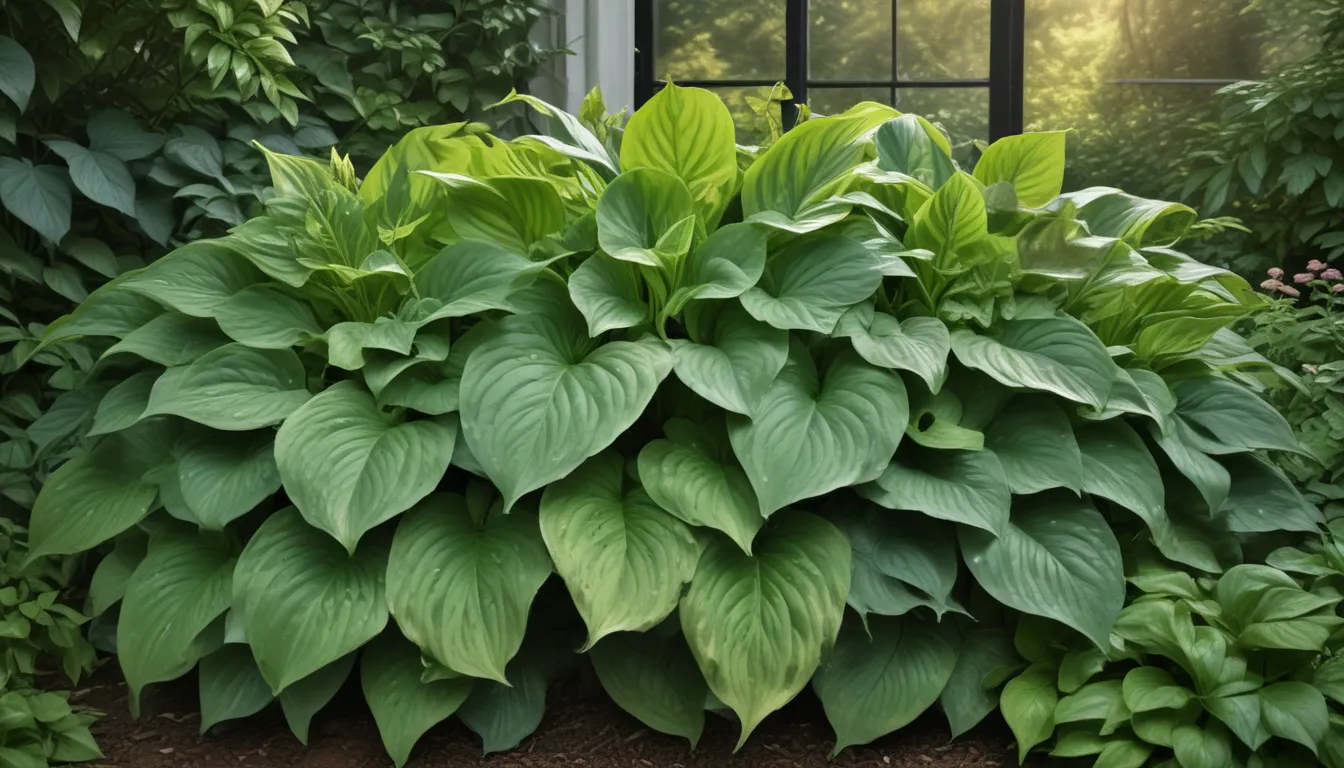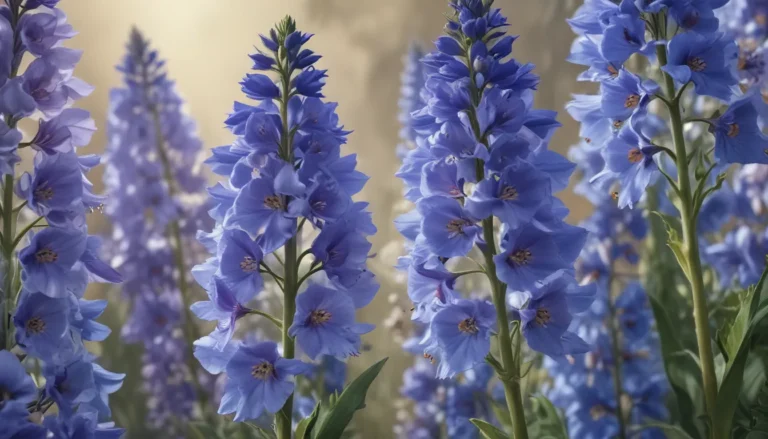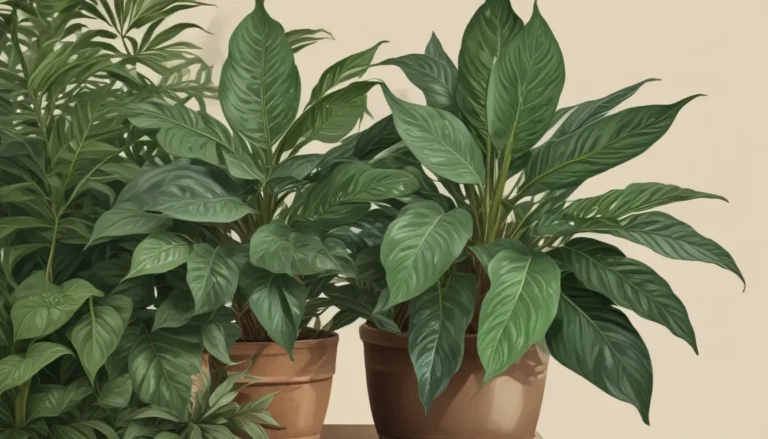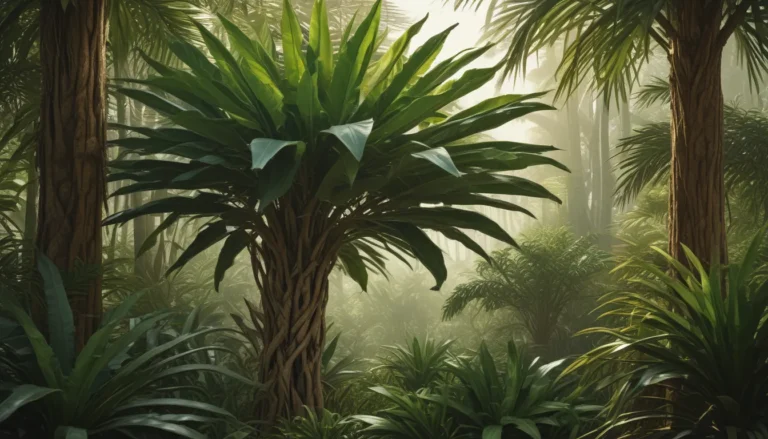The pictures we use in our articles might not show exactly what the words say. We choose these pictures to make you interested in reading more. The pictures work together with the words but don’t take their place. The words still tell you the important facts.
Are you ready to uncover the mysteries of hostas? These captivating plants have charmed gardeners for centuries with their lush foliage and stunning flowers. Whether you're a seasoned gardening pro or just starting out, hostas offer a world of beauty and intrigue to explore. Join us as we delve into the fascinating realm of hostas and discover 20 enigmatic facts about these remarkable plants. From their origins in East Asia to their practical uses and unique characteristics, get ready to be amazed by the wonders of hostas.
The Origins of Hosta
Hosta, also known as plantain lily, hails from East Asia, including China, Korea, and Japan. With approximately 70-75 species and countless cultivars, hostas are renowned for their striking foliage and diverse sizes. Their journey from East Asia to gardens around the world reflects their enduring appeal and adaptability.
The Varied Leaf Shapes
Hostas exhibit a stunning array of leaf shapes and sizes, from lance-shaped to heart-shaped, and from broad to narrow. Their leaves can be solid in color or variegated with hues of green, yellow, white, or even blue. The diversity of hosta leaves adds intrigue and visual interest to any garden landscape.
Hosta Flowering
While hostas are prized for their foliage, they also produce exquisite flowers in hues of white, lavender, or violet. These trumpet-shaped blooms add a delicate touch to the garden, attracting pollinators and enhancing the overall beauty of the plant. Some hosta cultivars are more renowned for their flowers than their leaves, showcasing the plant's versatility.
Hostas and Hummingbirds
The nectar-rich flowers of hostas beckon hummingbirds with their sweet fragrance and abundant nectar. These enchanting birds are drawn to hostas, making them a delightful addition to hummingbird-friendly gardens. Witness the magical dance of hummingbirds among the hosta blooms, adding a touch of whimsy to your outdoor space.
Hostas in the Shade
Hostas thrive in shady areas, making them a popular choice for gardens with limited sunlight. Their preference for dappled sunlight or partial shade allows them to flourish under trees or in shaded corners of the garden. Embrace the beauty of hostas in shaded spaces, where their lush foliage brightens up even the darkest corners.
Slug Magnet
Hostas are infamous for attracting slugs, which can damage their leaves and detract from their beauty. Gardeners combat this pesky issue with organic slug repellents and physical barriers to protect their hostas. By safeguarding your hostas from slugs, you can ensure their health and vigor for years to come.
Hosta Flowers Attract Bees
In addition to hummingbirds, hosta flowers also attract bees, essential pollinators that contribute to the plant's reproductive cycle. Bees play a crucial role in pollinating hostas, ensuring their continued growth and vitality. By nurturing a welcoming environment for bees, you support the health of your hosta plants and promote a thriving ecosystem in your garden.
The Many Sizes of Hostas
Hostas come in an incredible range of sizes, from miniature varieties suitable for containers to giant specimens that make a bold statement in the landscape. This diversity allows gardeners to select the perfect hosta for their garden space, whether it's a cozy patio or a sprawling yard. Explore the myriad sizes of hostas and find the ideal plant to complement your garden design.
Hostas as Ground Cover
With their dense foliage, hostas serve as excellent ground cover, quickly filling in empty spaces and suppressing weed growth. Their vigorous growth and lush leaves create a vibrant carpet that enhances the beauty of any garden. Utilize hostas as ground cover to create a lush, low-maintenance landscape that showcases their natural beauty.
Hostas Are Low Maintenance
One of the key appeals of hostas is their low maintenance nature, making them ideal for gardeners of all skill levels. With few pest or disease issues, hostas require minimal care and attention, allowing you to enjoy their beauty without constant upkeep. Whether you're a busy gardener or simply prefer a low-maintenance landscape, hostas are a perfect choice for a stress-free garden experience.
The Fragrant Hosta
While hostas are primarily prized for their visual appeal, some varieties also emit a delightful fragrance that enhances the sensory experience in the garden. The aromatic blooms of fragrant hostas add a new dimension to your outdoor space, creating a multisensory oasis that delights both the eye and the nose. Discover the intoxicating scents of fragrant hostas and elevate your garden experience with their alluring fragrance.
Hostas Are Deer Resistant
Hostas are prized for their deer-resistant properties, thanks to their thick leaves and sometimes fuzzy texture that deter deer from browsing. In areas with high deer populations, hostas' resilience against deer damage makes them a valuable addition to the garden. Protect your hostas from grazing deer and enjoy their beauty without the threat of wildlife interference.
The Many Uses of Hostas
Beyond their ornamental value, hostas offer practical uses as well. Their edible leaves can be incorporated into culinary creations, such as salads and stir-fries, adding a unique touch to your meals. Additionally, hostas have a history of medicinal use in traditional Asian herbal medicine, highlighting their multifaceted nature and cultural significance. Explore the diverse uses of hostas and discover the hidden depths of these versatile plants.
Hostas Are Winter Hardy
Hostas demonstrate remarkable adaptability, thriving in cold climates and withstanding harsh winter conditions. Their resilience in the face of cold temperatures makes them a popular choice for gardens in regions with freezing winters. Native to mountainous areas in Japan and Korea, hostas have evolved to endure challenging environments, showcasing their hardiness and endurance.
Hostas Are Great for Container Gardening
With their diverse sizes and beautiful foliage, hostas are well-suited for container gardening, adding color and texture to any patio or balcony. Create stunning displays in pots or hanging baskets, showcasing the beauty of hostas in a compact and versatile format. Enjoy the beauty of hostas in a smaller space and elevate your container gardening with these versatile plants.
Hostas and their Natural Enemies
While hostas have few natural enemies, they can occasionally fall prey to slugs, snails, and fungal diseases. Vigilant monitoring and proper garden hygiene are essential to prevent these issues and safeguard the health of your hostas. By staying proactive and attentive to potential threats, you can maintain the beauty and vitality of your hosta plants for years to come.
Hostas Are Long-Lived
Hostas are renowned for their longevity, with many varieties thriving for decades under proper care. Watch as your hostas grow and mature over the years, becoming cherished fixtures in your garden landscape. Their enduring beauty and resilience make them a beloved choice for gardeners seeking plants that stand the test of time.
Hostas in Japanese Gardens
Hostas hold a special place in Japanese gardens, where they are often featured for their serene beauty and elegant foliage. The tranquil and harmonious ambiance of Japanese landscapes is enhanced by the graceful presence of hostas, adding a touch of sophistication to the design. Immerse yourself in the rich tradition of Japanese gardening with hostas as a central element of this timeless art form.
The Popularity of Hosta Sports
Hosta sports, spontaneous genetic mutations that result in unique leaf patterns or colors, have captured the interest of collectors and enthusiasts. These distinctive variations offer a fresh take on traditional hosta varieties, adding a creative flair to garden design. Embrace the allure of hosta sports and explore the endless possibilities they bring to the world of hostas.
Hosta Breeding
Hostas are prized by plant breeders for their versatility and ability to produce a diverse range of cultivars. Through careful breeding and hybridization, new hosta varieties continue to emerge, expanding the palette of colors, patterns, and leaf shapes available to gardeners. Dive into the world of hosta breeding and witness the innovation and creativity that drives the evolution of these beloved plants.
Conclusion
In conclusion, hostas are truly fascinating plants that offer a wealth of beauty, diversity, and practical benefits to gardeners worldwide. From their stunning foliage and essential role in garden ecosystems to their enduring resilience and cultural significance, hostas captivate the senses and inspire admiration. Whether you're a seasoned gardener seeking new challenges or a novice exploring the world of gardening, hostas provide endless opportunities for creativity and discovery. Embrace the enchanting world of hostas and cultivate a garden filled with wonder and beauty.
Explore the Wonders of Hostas
Hostas are more than just plants – they are living works of art that add vibrancy and charm to any garden landscape. Discover the beauty and wonder of hostas as you explore their diverse varieties, unique characteristics, and essential role in garden ecosystems. From their ability to thrive in shade to their practical uses and cultural significance, hostas offer a tapestry of delights for garden enthusiasts of all levels. Embrace the magic of hostas and unlock the secrets of these enigmatic plants that continue to captivate and inspire gardeners around the world.
FAQs
Q: How often should I water my Hosta plants?
A: Hostas prefer moist soil, so water them regularly to keep the soil consistently moist without over-watering.
Q: Do Hostas require full sun or shade?
A: Hostas thrive in shade or partial shade conditions, avoiding direct sunlight to prevent sunburn or leaf scorch.
Q: How often should I fertilize my Hosta plants?
A: Apply a balanced, slow-release fertilizer in spring before new growth appears, repeating throughout the growing season for healthy plants.
Q: How do I divide my Hosta plants?
A: Divide hostas in early spring or after blooming, separating the plant into smaller divisions with roots and buds for replanting.
Q: Are Hostas prone to pests or diseases?
A: While generally resistant, hostas can be affected by slugs, snails, and fungal diseases. Practice good garden hygiene to prevent issues and maintain plant health.
Unlock the mysteries of hostas as you embark on a journey of discovery and appreciation for these extraordinary plants. With their captivating beauty, diverse attributes, and practical benefits, hostas offer endless possibilities for gardeners seeking to cultivate a vibrant and thriving landscape. Embrace the wonder of hostas and let their enigmatic nature inspire your gardening endeavors, enriching your outdoor space with beauty, tranquility, and timeless elegance.






